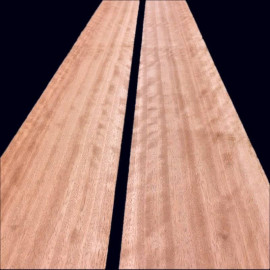
Long Veneers
Genuine wood veneer sheets, long length.
Length 180 cm and longer.
Various species are available: from the classic Oak, Ash, Cherry, and Beech to the precious Ebony and Rosewood.
These veneers are sliced mainly in 0.6 / 0.5 mm thicknesses and some particular thicknesses of 0.3 mm.
Other specialties such:
- Fiddled and figured Sycamore.
- Fumed Oak, Beech, and Eucalyptus.
- Pommele and Bird's Eye Maple.

 English
English
























